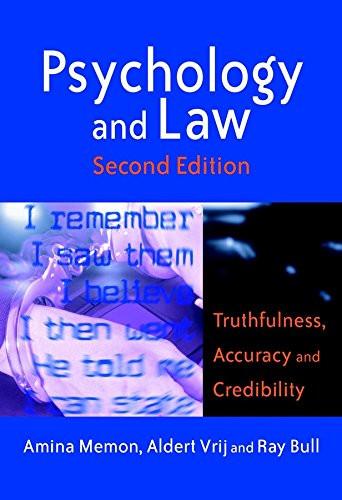Anastaska Кузнецова's Key Ideas from Psychology and Law
by Aldert Vrij, Amina A Memon, Ray Bull
Ideas, facts & insights covering these topics:
4 ideas
·1.44K reads
23
Explore the World's Best Ideas
Join today and uncover 100+ curated journeys from 50+ topics. Unlock access to our mobile app with extensive features.
Eyewitness Testimony
Despite its persuasiveness and potential power, eyewitness testimony can be inaccurate. In 1976, the British government’s Devlin Report tried to explain why honest eyewitnesses can be mistaken (Clifford & Bull, 1978). More recently, the introduction of DNA testing procedures has shed further light on this issue. DNA forensic analysis has been conducted on people who were convicted prior to its introduction in the 1990s.
37
524 reads
Eyewitness Testimony
These tests have resulted in the exoneration of people innocent of the crime for which they were convicted. Wells et al. (1998) described the first 40 cases in the USA in which DNA was found to exonerate a previously convicted person (five of these persons were sentenced to death). Of these 40 cases, 36 (90 percent) involved eyewitness identification evidence in which one or more witnesses falsely identified a person. One person was identified by five separate witnesses.
33
355 reads
Eyewitness Testimony
In a more recent analysis, Scheck, Neufield and Dwyer (2000) described 62 exoneration cases (eight persons were sentenced to death). In 52 of these 62 cases, mistaken identification occurred, involving, in total, 77 mistaken eyewitnesses. These findings led Wells et al. (1998: p. 605) to conclude that ‘‘eyewitness identification evidence is amongst the least reliable forms of evidence and yet it is persuasive to juries‘‘. While the DNA studies generally support this conclusion, Wells et al. (2000) point out that we do not know how representative these case studies are.
32
264 reads
Eyewitness Testimony
DNA exoneration is only possible in a fraction of cases, mostly sexual assault cases. Crimes such as murders, muggings and robberies rarely leave DNA trace evidence, so it is not possible to use this type of evidence in these crimes to question the reliability of witness evidence (Wells et al., 2000). A large part of what we know about eyewitness identification comes from empirical research on the factors influencing eyewitness performance.
33
304 reads
IDEAS CURATED BY
Discover Key Ideas from Books on Similar Topics
3 ideas
Forensic Victimology
Brent E. Turvey
7 ideas
How to Read a Paper
Trisha Greenhalgh
5 ideas
Forensic Investigations
Brent E. Turvey, Stan Crowder
Read & Learn
20x Faster
without
deepstash
with
deepstash
with
deepstash
Personalized microlearning
—
100+ Learning Journeys
—
Access to 200,000+ ideas
—
Access to the mobile app
—
Unlimited idea saving
—
—
Unlimited history
—
—
Unlimited listening to ideas
—
—
Downloading & offline access
—
—
Supercharge your mind with one idea per day
Enter your email and spend 1 minute every day to learn something new.
I agree to receive email updates
